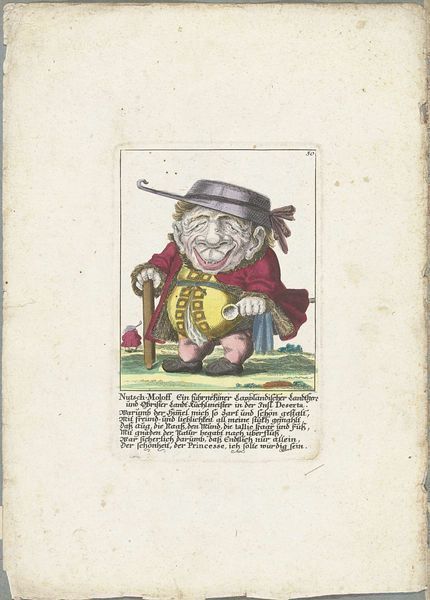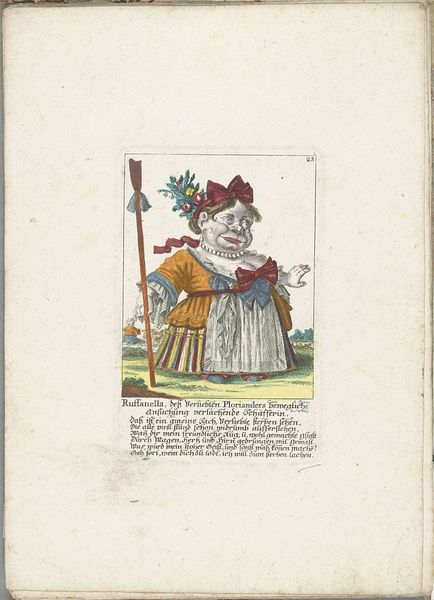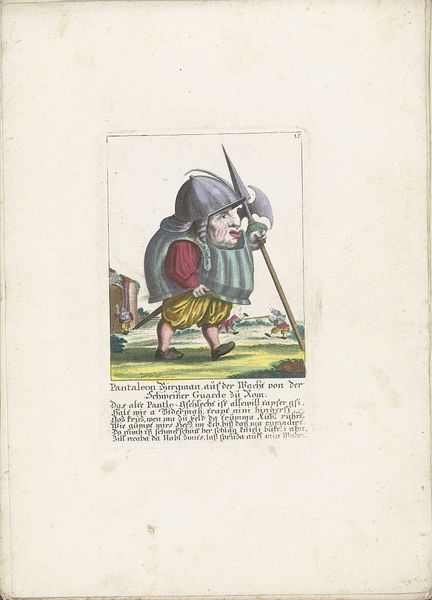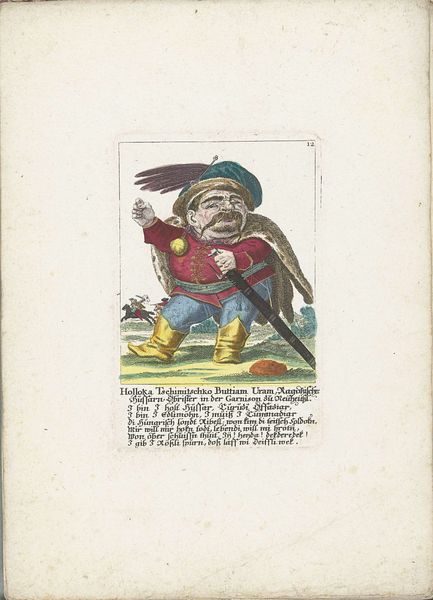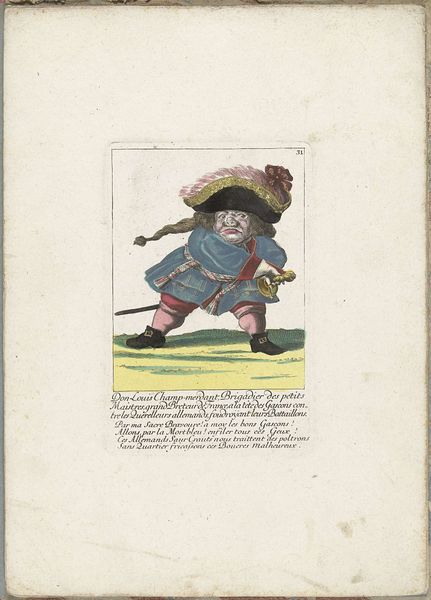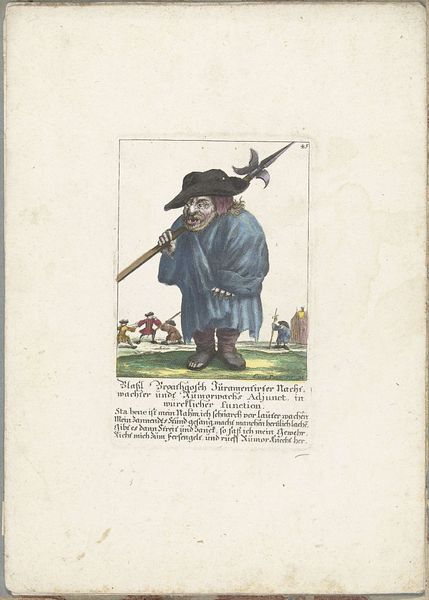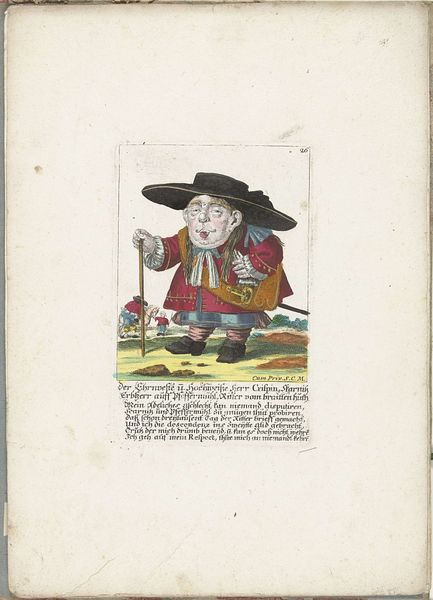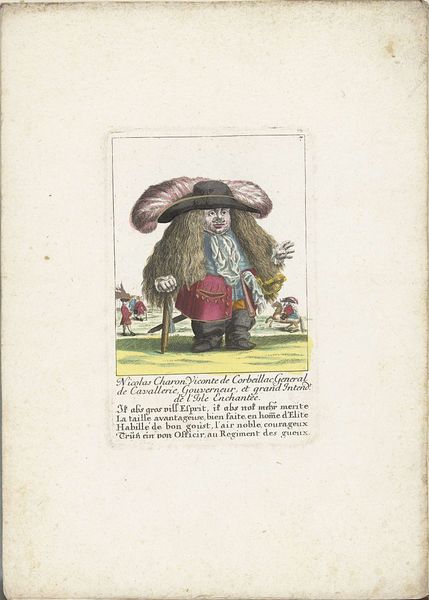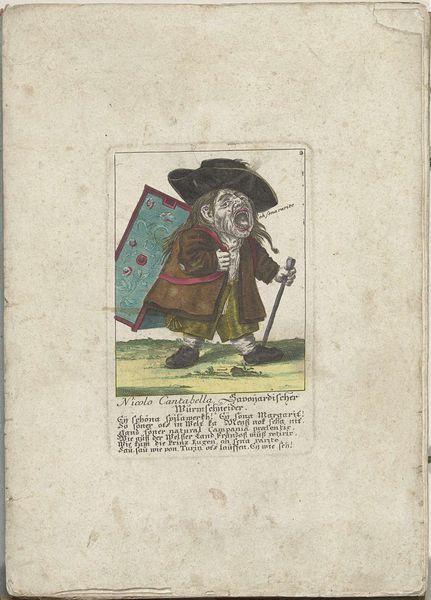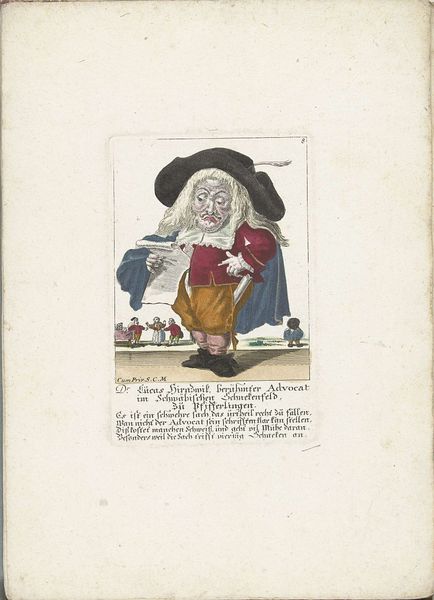
print, etching, watercolor
# print
#
etching
#
caricature
#
watercolor
#
coloured pencil
#
watercolour illustration
#
genre-painting
#
watercolor
Dimensions: height 170 mm, width 110 mm, height 320 mm, width 225 mm
Copyright: Rijks Museum: Open Domain
Around 1710, Martin Engelbrecht created this hand-colored engraving titled, ‘The dwarf Ploriander as shepherd.’ This small print offers us a glimpse into the social attitudes of the early 18th century. Dwarfs and people with disabilities were often treated as objects of amusement or pity. Here, Ploriander, is depicted in a somewhat comical manner, playing the role of a lovelorn shepherd. The text below the image is a poem, seemingly a lament by Ploriander to the shepherdess, Rudlanella. The print engages with the popular pastoral genre, which often idealized rural life and love. By casting a dwarf in this role, Engelbrecht perhaps sought to subvert or parody these conventions, challenging viewers to reconsider their preconceptions about beauty, love, and social status. To fully understand this artwork, one might explore the history of disability in early modern Europe, the conventions of the pastoral genre, and the role of prints in disseminating social commentary. Ultimately, this print reminds us that art is always embedded in a specific social and institutional context, and its meanings are constantly negotiated and reinterpreted.
Comments
No comments
Be the first to comment and join the conversation on the ultimate creative platform.
